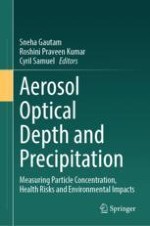2024 | OriginalPaper | Buchkapitel
Aerosol Optical Depth vs. PM2.5: Adaptation of Hybrid Optimization Algorithms for Temporal Prediction
verfasst von : Niveditha Muruganandam, Ramsundram Narayanan
Erschienen in: Aerosol Optical Depth and Precipitation
Verlag: Springer Nature Switzerland
Aktivieren Sie unsere intelligente Suche, um passende Fachinhalte oder Patente zu finden.
Wählen Sie Textabschnitte aus um mit Künstlicher Intelligenz passenden Patente zu finden. powered by
Markieren Sie Textabschnitte, um KI-gestützt weitere passende Inhalte zu finden. powered by
